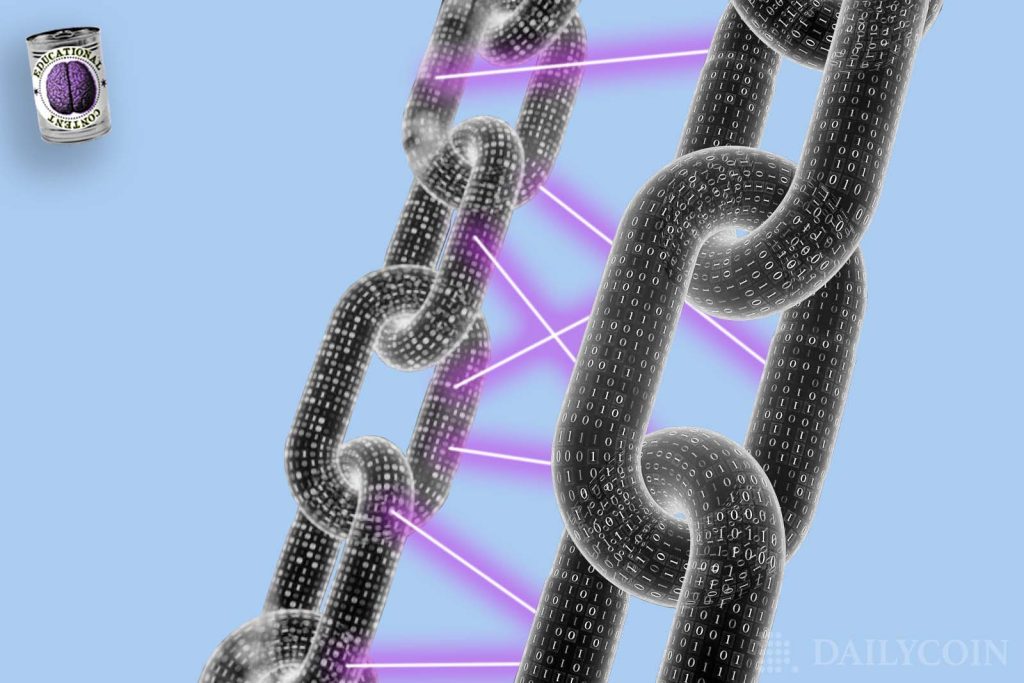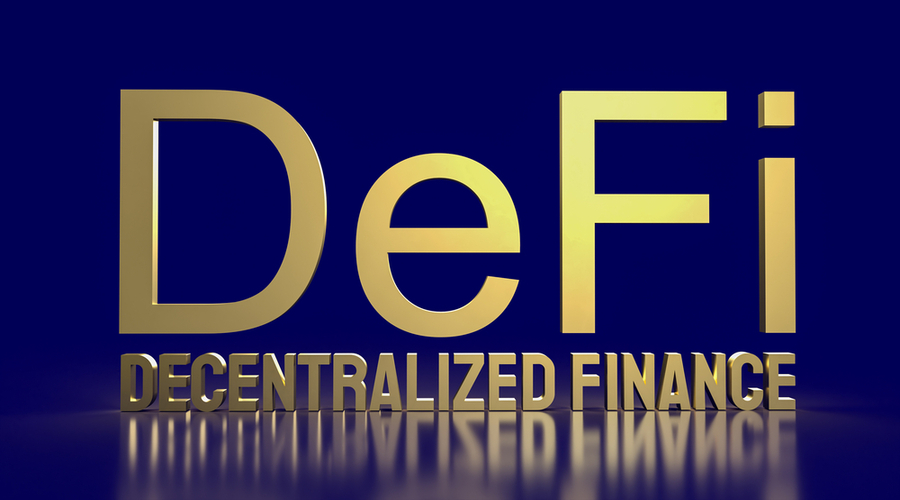The Importance of Interoperability in DeFi
Interoperability plays a vital role in the decentralized finance (DeFi) ecosystem, as it enables different blockchain networks to communicate and interact seamlessly with each other. In a landscape where multiple blockchains coexist, interoperability eliminates the silos and limitations imposed by isolated networks, unlocking the full potential of decentralized finance.
What are Cross-Chain Bridges?
Cross-chain bridges are technological solutions designed to connect and enable communication between different blockchain networks. They serve as bridges that facilitate the transfer of assets, data, and functionality across disparate chains. By establishing these bridges, DeFi platforms and applications can leverage the strengths and resources of various blockchains, creating a more robust and versatile financial ecosystem.
The Role of Cross-Chain Bridges in Enabling Interoperability

Cross-chain bridges act as the conduits that enable interoperability in the DeFi landscape. They provide the necessary infrastructure and protocols to securely transfer assets and information between blockchains. These bridges ensure that the transferred assets retain their integrity, security, and properties throughout the process.
By leveraging cross-chain bridges, DeFi platforms can extend their reach beyond a single blockchain network, accessing a more extensive pool of assets, liquidity, and services. This interoperability enhances the overall functionality and efficiency of decentralized finance applications, empowering users with more opportunities and options.
How Cross-Chain Bridges Facilitate Seamless Communication
Cross-chain bridges utilize a combination of cryptographic techniques, smart contracts, and protocols to facilitate seamless communication between different blockchain networks. The process involves several key steps:
- Asset Locking: When a user intends to transfer an asset from one blockchain to another, the asset is locked on the source chain. This locking mechanism ensures that the asset remains secure and inaccessible during the transfer process.
- Asset Representation: Once the asset is locked, a representation or tokenized version of the asset is created on the destination chain. This representation mirrors the original asset’s properties, allowing it to be utilized within the destination blockchain’s ecosystem.
- Proof of Ownership: To ensure the integrity and authenticity of the transfer, the user must provide proof of ownership on the source chain. This proof is verified by the smart contracts governing the cross-chain bridge, validating the user’s authority to transfer the asset.
- Asset Unlocking: Once the proof of ownership is verified, the asset is unlocked on the destination chain, making it available for use within the destination blockchain’s applications and smart contracts.
Through this process, cross-chain bridges enable assets to seamlessly traverse different blockchain networks, maintaining their value, properties, and ownership rights throughout the transfer.
Advantages of Interoperability in the DeFi Ecosystem
The interoperability facilitated by cross-chain bridges brings numerous advantages to the DeFi ecosystem:
- Expanded Asset Access: Interoperability allows users to access a wider range of assets and services beyond a single blockchain network. This opens up new investment opportunities and diversifies risk exposure.
- Enhanced Liquidity: By connecting different blockchains, interoperability increases the overall liquidity available within the DeFi ecosystem. Liquidity can flow freely between chains, benefiting traders, investors, and users of decentralized finance platforms.
- Cross-Chain Composability: Interoperability enables cross-chain composability, where different DeFi protocols and applications can interact and combine functionalities. This fosters the creation of more sophisticated financial instruments and innovative solutions.
- Risk Mitigation: Interoperability reduces the reliance on a single blockchain network, mitigating the risks associated with network congestion, security vulnerabilities, or other technical issues. Users can diversify their assets across multiple chains, reducing the potential impact of a single chain’s shortcomings.
Challenges in Achieving Interoperability
While the potential of interoperability is immense, there are several challenges to overcome:
- Standardization: Different blockchain networks often have their protocols, standards, and consensus mechanisms. Achieving standardized protocols that can seamlessly communicate and interact across multiple chains is crucial for widespread interoperability.
- Scalability: As the number of cross-chain transactions increases, scalability becomes a significant concern. Ensuring that cross-chain bridges can handle a high volume of transactions while maintaining efficiency and security is essential.
- Security: Interoperability introduces additional attack vectors and risks. Robust security measures, audits, and constant monitoring are necessary to protect assets and ensure the trustworthiness of cross-chain bridges.
Popular Cross-Chain Bridge Projects in DeFi
Several projects and protocols are at the forefront of enabling interoperability in the DeFi ecosystem:
- Polkadot: Polkadot is a multi-chain network that allows for seamless interoperability between different blockchains. It provides a framework for creating custom blockchains, known as parachains, that can communicate and share assets and information.
- Cosmos: Cosmos is another project that aims to enable interoperability between multiple blockchains. It utilizes the Inter-Blockchain Communication (IBC) protocol, which allows chains within the Cosmos ecosystem to securely exchange assets and data.
- Ethereum Bridge: Ethereum has seen the development of various cross-chain bridge solutions, such as the Ethereum Bridge on the Polygon (formerly Matic) network. These bridges enable the transfer of assets between Ethereum and other compatible chains, enhancing liquidity and accessibility.
The Future of Interoperability in DeFi
As the DeFi ecosystem continues to evolve, interoperability will play an increasingly significant role. Efforts to standardize protocols, enhance scalability, and improve security will drive the advancement of cross-chain bridges and interoperability solutions.
The future holds the promise of a more interconnected and versatile DeFi landscape, where users can seamlessly access assets and services from various blockchain networks. Interoperability will drive innovation, collaboration, and the creation of new financial paradigms that empower individuals worldwide.
Challenges in Achieving Interoperability
While the potential of interoperability is immense, there are several challenges that need to be addressed in order to achieve seamless communication between different blockchain networks:
- Protocol Divergence: Each blockchain network has its own unique protocols and consensus mechanisms, making it difficult to establish direct compatibility between them. Standardizing protocols and creating common communication standards will be crucial in overcoming this challenge.
- Security Risks: Interoperability introduces additional security risks, as the transfer of assets and information between blockchains can create potential vulnerabilities. Robust security measures and thorough auditing are essential to protect against potential attacks and ensure the integrity of cross-chain transactions.
- Scalability and Performance: As the number of transactions across different blockchains increases, ensuring scalability and optimal performance becomes a critical factor. Solutions such as layer-2 scaling solutions and off-chain computation are being explored to address these challenges and ensure that interoperability can handle the growing demands of the DeFi ecosystem.
- Consensus Mechanisms: Achieving consensus among different blockchain networks with varying consensus mechanisms is a significant hurdle. Developing interoperability protocols that can accommodate different consensus mechanisms and ensure trustless transactions is a key area of research and development.
The Role of Oracles in Interoperability
Oracles play a vital role in facilitating interoperability between blockchain networks. Oracles act as intermediaries that provide external data and information to smart contracts, allowing them to interact with the outside world. In the context of interoperability, oracles enable cross-chain communication by providing information from one blockchain to another.
Oracles serve as bridges between different blockchains, allowing them to exchange data and trigger actions based on that data. They enable smart contracts on one chain to access and utilize data from another chain, enhancing the capabilities and functionality of decentralized applications.
Use Cases for Interoperability in DeFi
Interoperability opens up numerous use cases and possibilities in the decentralized finance space. Some notable use cases include:
- Cross-Chain Asset Swapping: Interoperability enables users to swap assets directly between different blockchains without relying on centralized exchanges. This allows for seamless asset transfers and increases liquidity across multiple chains.
- Leveraging Specialized Features: Different blockchains offer unique features and capabilities. Through interoperability, DeFi applications can leverage these specialized features by incorporating functionalities from multiple chains into a single application.
- Multi-Chain Liquidity Provision: Interoperability allows liquidity providers to deploy their assets across multiple chains, maximizing their potential returns and providing liquidity to various DeFi protocols.
- Cross-Chain Collateralization: Interoperability enables cross-chain collateralization, where users can utilize assets from one chain as collateral on another chain. This allows for increased borrowing capacity and opens up new opportunities for decentralized lending and borrowing platforms.
- Interconnected Decentralized Exchanges: Interoperability allows for the creation of interconnected decentralized exchanges (DEXs), where users can trade assets across different blockchains in a trustless and decentralized manner. This fosters a more inclusive and interconnected DeFi ecosystem.
The Future of Interoperability in DeFi
As the DeFi ecosystem continues to grow and mature, the importance of interoperability will only increase. Efforts are underway to address the technical challenges and enhance the infrastructure for seamless communication between blockchain networks.
In the future, we can expect to see more standardized protocols, improved scalability, and enhanced security measures that facilitate robust and efficient interoperability. This will further fuel innovation, drive collaboration between different blockchain communities, and unlock new possibilities for decentralized finance.
Conclusion
Interoperability through cross-chain bridges revolutionizes the DeFi landscape, enabling seamless communication and asset transfer between different blockchain networks. These bridges enhance liquidity, expand asset access, and foster cross-chain composability, unlocking new possibilities for decentralized finance. As the DeFi ecosystem evolves, interoperability will continue to drive innovation, collaboration, and the democratization of finance.

